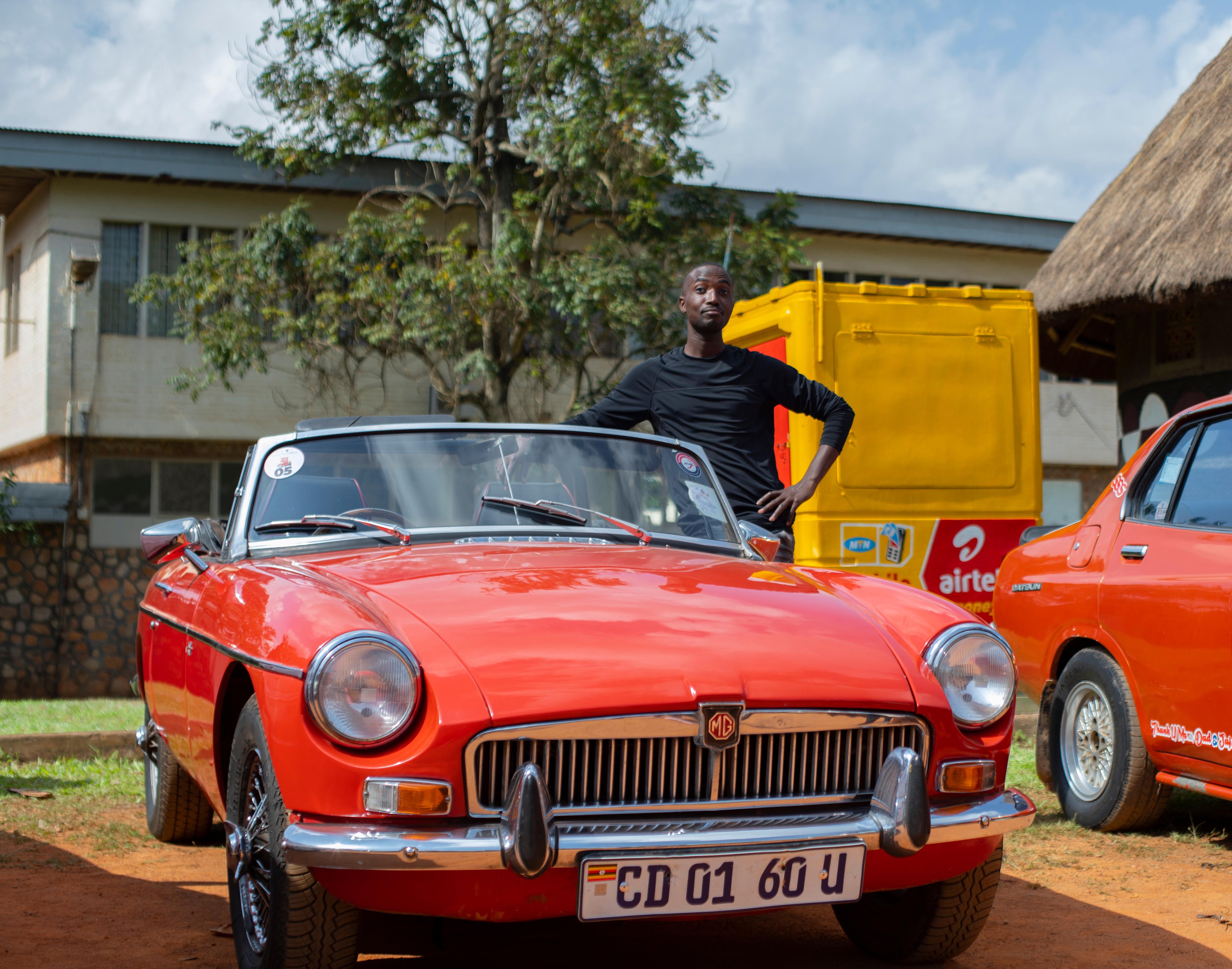Prime
My Roadster rarely breaks down - Kayondo

A car enthusiast poses on the WGB Roadster.
What you need to know:
- Even now, many years on there is a residual scepticism about the rubber bumper models, but to be honest a nice rubber bumper MGB looks rather smart.
Historically, car names are attached to or derived either from their founders or the place where the dealership was established at the time. One of such cars is the MGB Roadster. MG stands for Morris Garages, the name chosen by MG’s founder Cecil Kimber as a show of respect for his then boss William Morris, according to online portal, mgmotor.com.
The portal says Cecil’s vision to produce world-class sports cars quickly became a reality and that by the 1930s, MG cars were winning races across Britain and Europe. They were in series of MGA, MGB and MGBGT. The MGB Roadster was manufactured in two series; one with chrome bumpers and from 1974 onwards, plastic.
Among those with chrome bumpers is Edwaadi Kayondo’s MGB Red Convertible Roadster 1971 model that he has had for one year after getting it from a one Andrew who previously worked with the British High Commission in Uganda.
Kayondo’s MGB Roadster runs on a 1800cc petrol engine with twin Skinners Union (SU) carburetors. A convertible two seater, Kayondo’s car is a primitive convertible with no power steering and operates on a manual transmission with four gears and one for overdrive. Synonymous with sports, the MGB Roadster is a strong car that rarely breaks down. It has lever arms that work as shock absorbers and spoke wheels similar to those of a bicycle, not your ordinary rims.
“Since it is a two-seater, it is a car you buy as a young person before you have children or as a retired person,” says the 68-year old retiree.
Service
According to Kayondo, MG merged with British Leyland, Austin Morris and Land Rover, the family in which his convertible falls. This, he says, has made it easier for him to get spare parts for his car. Depending on what he needs, Kayondo buys his spare parts in Mengo, Kampala. Other times, he improvises and uses parts from some Land Rover models, Austin Morris and Rover brands.
“Because I buy genuine spare parts, my car rarely breaks down. Additionally, I keep it in good condition by on driving it occasionally,” he says.
Fuelling
At full capacity, the MGB Roadster fuel tank carries 60 litres and uses ordinary fuel. On on a tarmacked road, it can go up to 220k/hr. However, its low ground clearance means it is not recommended for off-road drives. It covers approximately 10 miles per litre of fuel. When it is well maintained, it is not a fuel guzzler.
History
According to mgocni.com, an online portal, the MGB was in production for eighteen years from 1962-1980 but its conception was during its MGA predecessor’s period. The MGA ran from 1955 to mid-1962 and at the time was MG’s most successful sports car selling over 101,000 cars in roadster and coupe form worldwide and it was to be the last MG sports car with a separate chassis. The portal adds that at the height of MGA sales in 1959, MG was already thinking about its successor and this was passed to their design team and what they came up with was something structure wise very different to what had gone before.
“The B series engine of the MGA was enlarged to 1798 cc and known as an 1800, a similar four speed three synchro gear box was installed as were similar suspension components to the MGA and the new MG was given the long name of MG MGB 1800 and soon shortened before production to the more logic name of MGB,” the portal says.
It adds that the MGB in 1962 was known as the Mark 1 and had leather seats, pull handle doors, flush fitting locks, disc wheels, cross ply tyres, aluminium bonnet, pack-away hood and the grey hood frame split into two to allow for storage in the boot.
The pack -away hood regarded as a simple standard hood was offered up until 1970 although many buyers went for the optional extra since 1963 of the folding hood, which was a lot more convenient.
Rubber vs Chrome
Changing the bumpers from chrome to rubber was the only significant design change the MGB Roadster endured. It was driven by US safety regulations in the mid-70s and was then formally adopted for all countries. Many enthusiastic enthusiasts saw the rubber bumpered MGB as the end of an era. It wasn’t, but it was a massive change to the classic British sports car. Even now, many years on there is a residual scepticism about the rubber bumper models, but to be honest a nice rubber bumper MGB looks rather smart.


